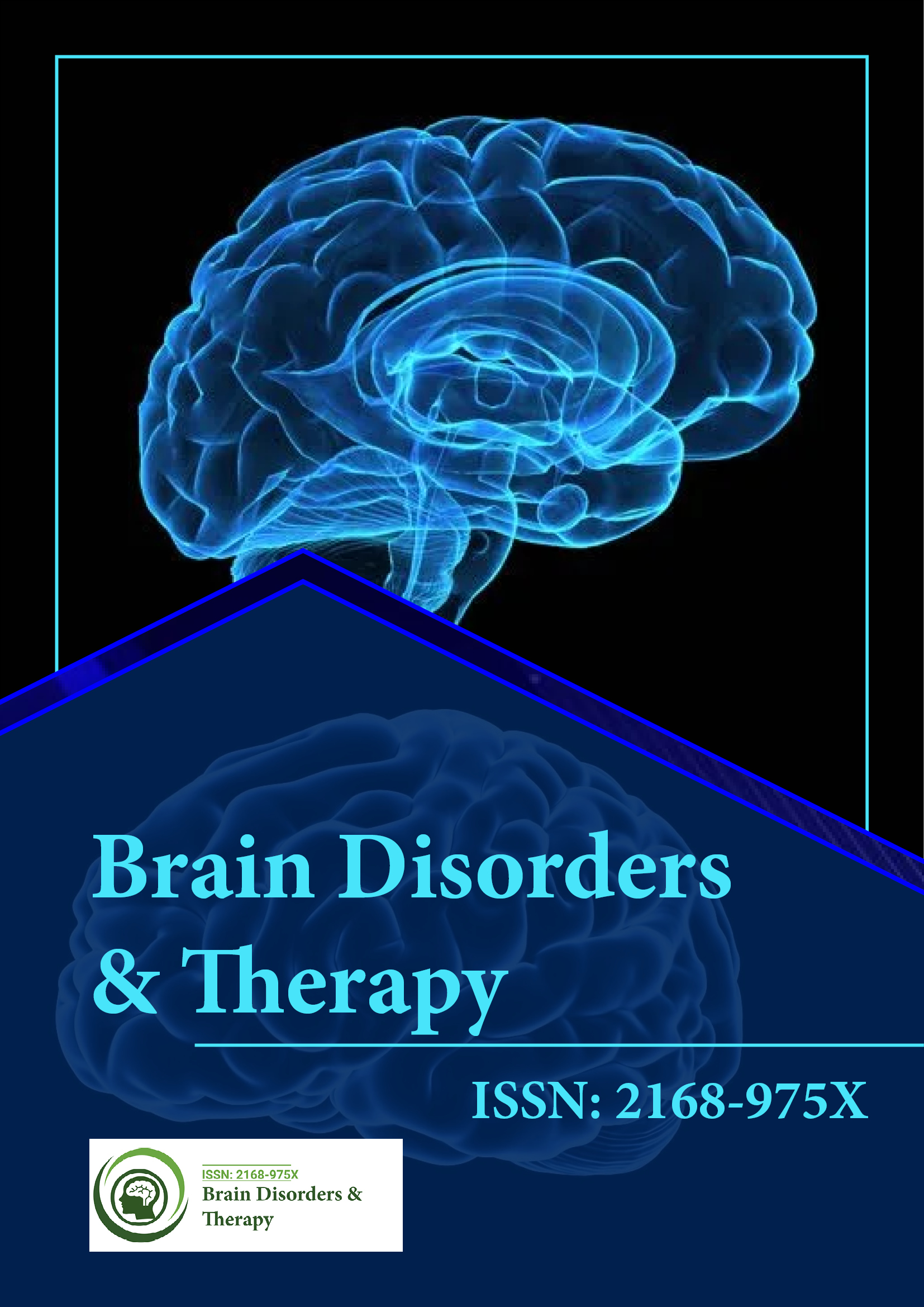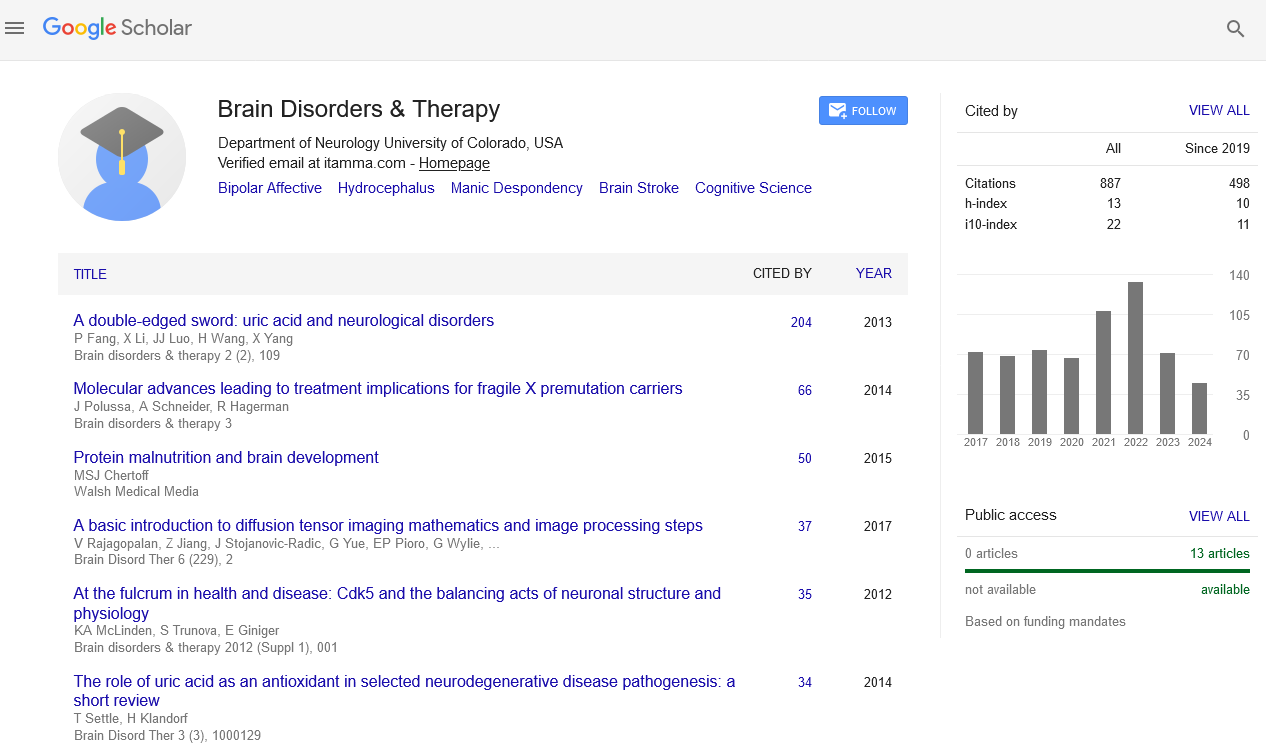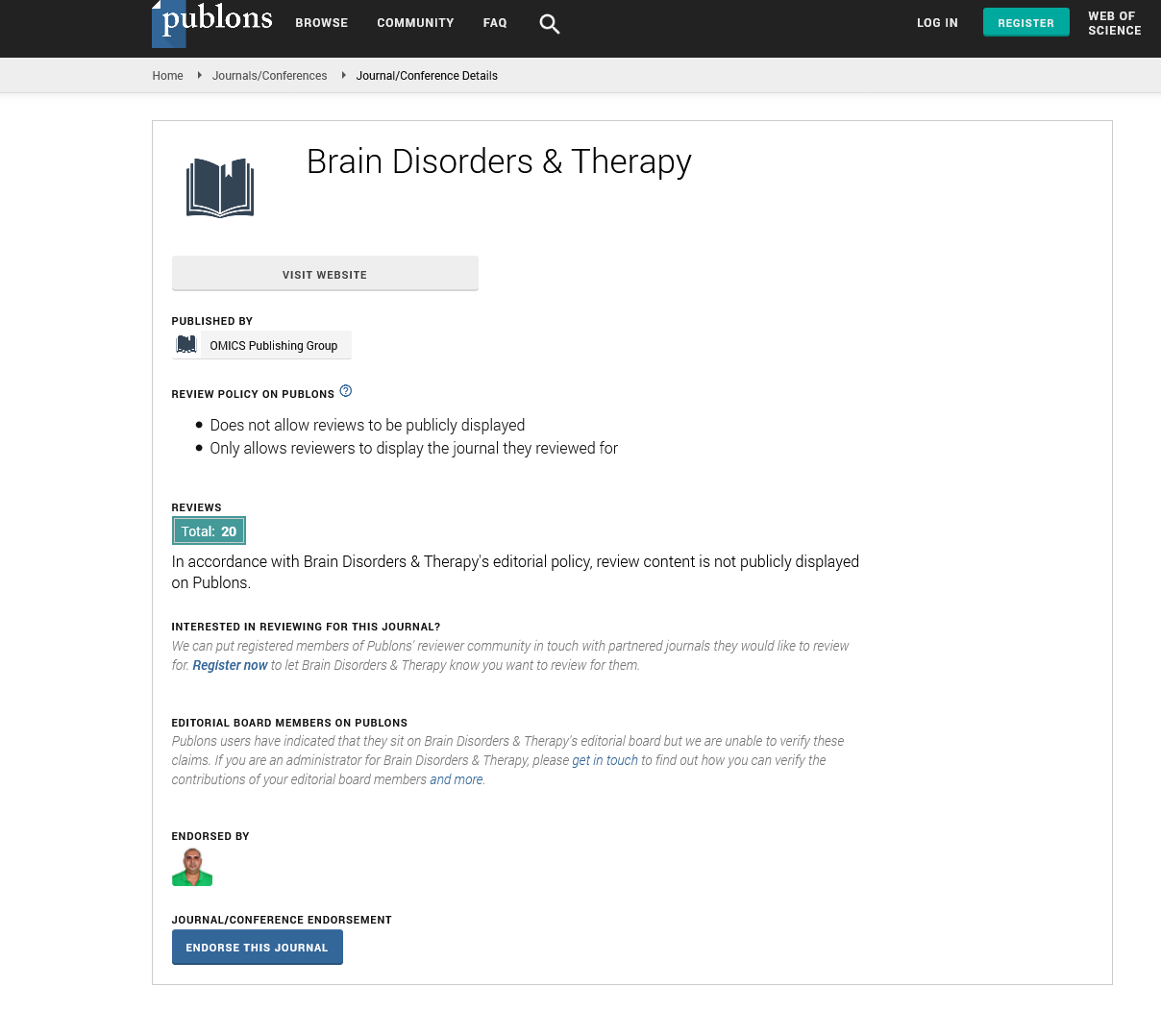Indexed In
- Open J Gate
- Genamics JournalSeek
- JournalTOCs
- RefSeek
- Hamdard University
- EBSCO A-Z
- OCLC- WorldCat
- Publons
- Geneva Foundation for Medical Education and Research
Useful Links
Share This Page
Journal Flyer

Open Access Journals
- Agri and Aquaculture
- Biochemistry
- Bioinformatics & Systems Biology
- Business & Management
- Chemistry
- Clinical Sciences
- Engineering
- Food & Nutrition
- General Science
- Genetics & Molecular Biology
- Immunology & Microbiology
- Medical Sciences
- Neuroscience & Psychology
- Nursing & Health Care
- Pharmaceutical Sciences
Prognostic factors in glioblastoma multiforme: Our experience
International Conference on Neuro Oncology and Rehabilitation
July 21-22, 2016 Brisbane, Australia
A De Tommasi
University ‚??A. Moro‚?Ě of Bari, Italy
Keynote: Brain Disord Ther
Abstract:
Introduction: Glioblastoma Multiforme (GBM) is the most common and aggressive cerebral neoplasm in adults with an incidence of 5.26 cases per 100000 inhabitants per year. It usually occurs in the sixth and seventh decade of life. The prognosis is severe with an average survival of 12-18 months. Several studies have been conducted to identify the prognostic factors in GBM. The only fact resulting from these studies is the prognostic role of age. The importance of the subject‚??s functional status at diagnosis and of the lesion‚??s location is still unclear. Materials & Methods: Our study is a retrospective analysis of 50 patients from 2010 to 2013. The average age is 63 years old with a M:F rate of 1.6. As far as the identification of prognostic factors is concerned, the following aspects have been taken into account: Age, gender, Kasnofsky Performance Status (KPS) at the admission, lesion‚??s location and the extent of surgical resection. At the admission, 18% of patients had a KPS of 60 or lower, 75% showed a KPS value of 70 or 80, 6% had a KPS of 90 and none had a KPS of 100. After the operation, the situation changed with 62% of patients with a KPS of 90-100, 30% with a KPS of 70-80 and only 8% of subjects showing a KPS of 60 or lower. Results: The univariate analysis results have been verified with a multivariate analysis for which the Cox model and the stepwise selection of variables have been used. The prognostic role of each risk factor has been evaluated with a survival analysis using the Cox model. The univariate analysis showed that an age of 65 or more and a KPS of 80 or more are usually associated with a better outcome. Lesion‚??s location in eloquent area and the subtotal extent of surgical resection have a negative influence on survival (with no relevant statistical significance). Gender doesnot show a relation with the prognosis of subjects with glioblastoma multiforme. Conclusion: The first aspect emerging from our study is the importance of the surgery in improving the patient‚??s symptoms and functional status. The univariate analysis showed that age is the only risk factor with a statistical significant influence on survival. No association emerged between the extent of resection and the subject‚??s survival despite a p-value close to 0.05. Inmultivariate analysis the p-value is 0.08 with OR of 2.35. Therefore, an explorative analysis of the interaction between the lesion‚??s location and the extent of resection was conducted so as to give a more appropriate interpretation of this result. This analysis highlighted that a greater extent of resection is associated with a better outcome in both cases where GBM is located in eloquent or non eloquent area.
Biography :
A De Tommasi worked in bari general hospital and university of bari – 11, piazza giulio cesare, 70124, bari, Italy Healthcare – neurosurgery, and chairman and head of the neurosurgical and neurotraumatological department clinical, surgical, didactic and administrative activities and responsibilities Bari general hospital and university of bari – 11, piazza giulio cesare, 70124, bari, Italy Healthcare – neurosurgery Deputy head in the neurosurgical department Clinical, surgical, didactic and administrative activities and responsibilities.
Email: antonio.detommasi@uniba.it


